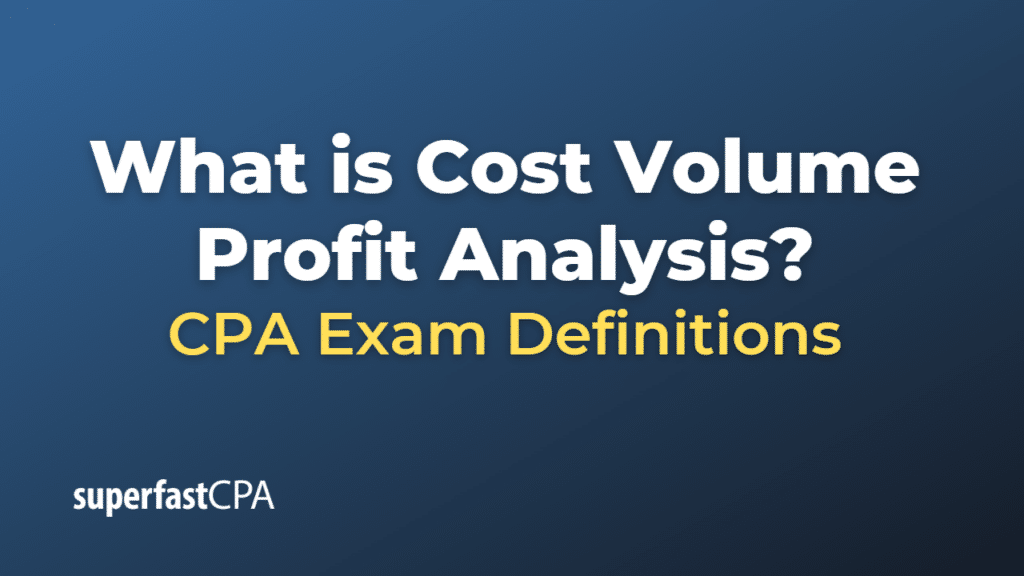Cost Volume Profit Analysis
Cost-Volume-Profit (CVP) analysis is a managerial accounting technique that is concerned with the effect of sales volume and product costs on operating profit of a business. It deals with how the operating profit is affected by changes in variable costs, fixed costs, selling price per unit, and the sales mix of two or more different products.
CVP analysis employs the use of break-even points, which are expressed either in the number of units or the total sales revenue that a business needs to generate to cover its costs. Beyond this point, every additional unit sold contributes to profit.
Here are the main components of CVP analysis:
- Selling Price: This is the price at which each unit of a product is sold.
- Variable Costs: These are costs that vary directly with the level of production. Examples include direct materials and direct labor costs.
- Fixed Costs: These are costs that do not change with the level of production or sales. Examples include rent, salaries, and insurance.
- Contribution Margin: This is the selling price per unit minus the variable cost per unit. The contribution margin shows how much each unit contributes to covering fixed costs and then generating profit.
- Break-Even Point: This is the point at which total revenue equals total costs. There is no profit or loss at the break-even point.
Managers use CVP analysis to make decisions about things like what price to charge for a product, what volume of products to produce, and what mix of products to sell. CVP analysis can also be used to plan future levels of operating activity and assist in the decision-making process related to operational strategies.
Example of Cost Volume Profit Analysis
Let’s consider a company called ‘The Book Nook’ that sells books online. We’ll use the following hypothetical figures:
- Selling price per book: $30
- Variable cost per book (cost of the book, shipping, etc.): $20
- Fixed costs (website maintenance, rent, salaries, etc.): $10,000 per month
First, we calculate the contribution margin per unit, which is the selling price per book minus the variable cost per book:
Contribution margin = $30 – $20 = $10 per book
This means that each book sold contributes $10 to cover fixed costs and then to profit.
Next, we calculate the break-even point in units (i.e., how many books need to be sold to cover all costs). The formula is Fixed Costs / Contribution Margin per Unit:
Break-even point in units = $10,000 / $10 = 1,000 books
So, ‘The Book Nook’ needs to sell 1,000 books per month to break even. Any sales above this amount contribute to profit.
Now, let’s say ‘The Book Nook’ wants to make a profit of $5,000 per month. To find out how many books need to be sold to achieve this, we add the desired profit to the fixed costs and divide by the contribution margin per unit:
Units to achieve target profit = ($10,000 fixed costs + $5,000 profit) / $10 contribution margin = 1,500 books
So, ‘The Book Nook’ needs to sell 1,500 books per month to achieve a profit of $5,000.
This is a simplified example, but it illustrates how cost-volume-profit analysis can be used to make important business decisions, such as pricing and sales targets.













